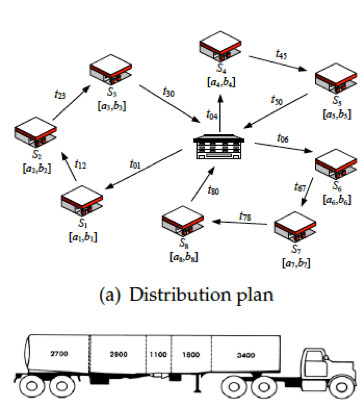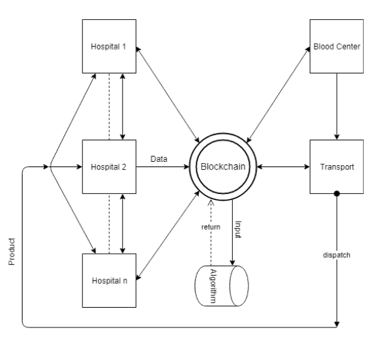Transportation and Logistics
The transportation industry plays a critical role in today’s globalized economy becoming rapidly one of the vital components of nowadays supply chain. Alone in the U.S., an astonishing number of commodities are constantly being transported through the road infrastructure network, satisfying customer demands all over the country. According to the U.S. Federal Highway Administration, about 20 billion tons of goods, worth more than $10 trillion, were moved across the country just in 2012. Transportation-related goods and services accounted for approximately 11% of the U.S. gross domestic product in 2000, with only housing, healthcare and food accounting for a greater share.
Along with transportation problems, there are several other logistics problems whose efficient solution may have a significant effect on the efficiency of any supply chain. For example, Location-allocation, Network Design, and Inventory management problems are amongst the most crucial topics to be studied in recent times. Over the last couple of decades numerous solution approaches have been developed to tackle many of these problems, considering the many requirements of many industries around the world. However, despite the constant development of new ideas, there are still many applications that do not directly fit the characteristics of traditional problems. For many of those applications, alternative models are needed to provide solutions that cope with such complex system conditions. In GAMMA, we are interested in developing new ideas to tackle some of these challenging problems.
Representative Publications
Petroleum Products Distribution
For the specific application of petroleum products, there are other reason why optimally distributing this type of commodities is a complex challenge. In addition to the stochastic nature of the demands, the limited number of trucks and drivers, the regulatory policies, and the difficulties posed by the inherent characteristics of the products (i.e., mostly flammable liquids that must be transported in specialized multi-compartmented trucks and trailers), the heterogeneity of the customers and the strict delivery time requirements make the distribution planning of these products especially difficult. As part of our research we have shown that it is possible for the transporters to utilize some strategic actions that provide the customers with viable alternatives that may often trigger minor alterations to the customer requirements, allowing the transporter to identify better routing strategies that reduce late deliveries and unsatisfied orders.

Decentralizing the Blood Supply Chain
Effective inventory and demand management is a crucial function in the blood supply chain, not only because of the vital nature of the product but also because of its high cost and perishability. Of particular concern is wasted or expired products that are collected but never used. In 2015 a national survey revealed that blood centers and hospitals outdated, or scrapped, 600,000 out of 12,028,000 units (5%), equal to about $126 million in lost revenue for blood collection and storage agencies. For non-hospital blood centers this represents a 35.6% increase in the amount of outdated products compared to the 2013 survey results, and the effects are further compounded by noted decreases in blood donations and collections over this same period. In GAMMA, we are interested in advancing the fundamental models and mechanisms that govern blood product inventory management systems, reducing the impact of outdates and shortages while dramatically improving responsiveness of this critical supply chain. Our aim is to explore the use of distributed ledger technologies conjoined with improved optimization models to reduce outdates and shortages to benefit donors, patients/hospital, and demand nodes while minimizing system costs.

Bus Rapid Transit Systems Design
In recent years, well-designed bus rapid transit (systems have become a real alternative to more expensive rail-based public transportation systems around the world. However, once the BRT system is operational, its success often depends on the routes offered to passengers. Thus, the bus rapid transit route design problem is the problem of finding a set of routes and frequencies that minimizes the operational and passenger costs (travel time) while simultaneously satisfying the system’s technical constraints, such as meeting the demands for trips, bus frequencies, and lane capacities. In the past we have developed solution approaches to identify close-to optimal routes satisfying several complex requirements.

